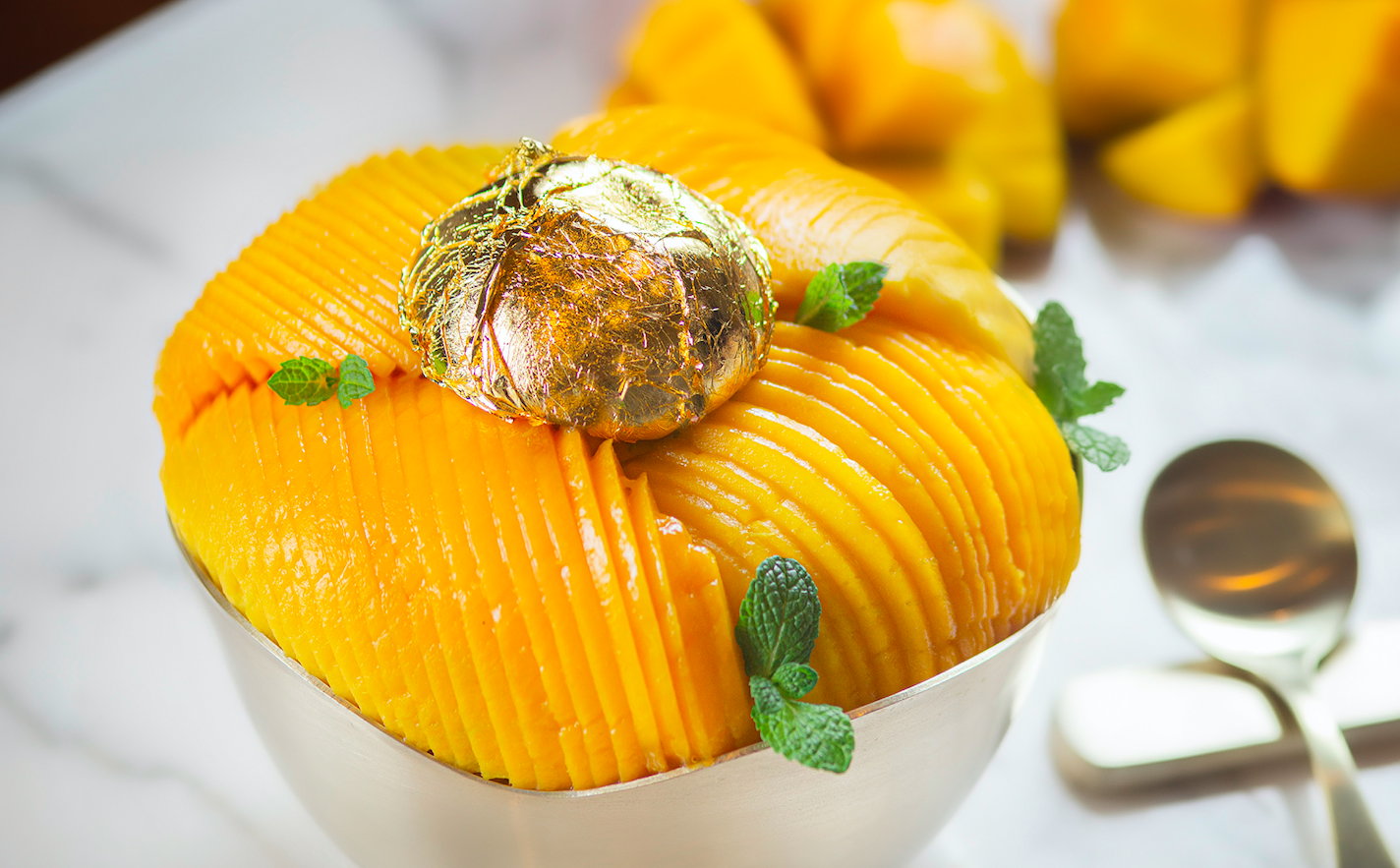
Do You Want Gold With That Mango Bingsu?
Gold, mango, frozen milk shavings. They define the country's craze for bingsu, a dessert that has become synonymous with living it up.
Mounds of juicy golden mango slices top fine shavings of frozen milk. Edible gold leaf disguising a ball of "thick mint-mango sauce made with techniques of molecular gastronomy" crowns it all. In case that weren't sumptuous enough, mango sorbet, mango sauce and even mango pudding accompany the set up.
One might say this over-the-top affair is South Korea's most-talked-about delicacy of the season. Each summer the country's businesses compete to offer the trendiest takes on bingsu 빙수, an old-fashioned desert that normally combines ice shavings with sweetened red-bean paste; and the bar for what constitutes quality—and the attendant price tag—soars.
The Four Seasons Seoul's mango version, described above, costs a a whopping 96,000 won (73 dollars) and is known to be the most expensive in the whole country.
And yet there is unrelenting demand, not only at the Four Seasons but also at the Shilla Hotel, often called the progenitor of the craze. Even before the summer heat kicked in, "the lobby of the Shilla Hotel Seoul was full of people waiting to eat the apple mango bingsu" priced at 83,000 won (64 dollars), reported Hankyung, a business daily, on May 8. (Apple mango is the most popular variety of mango, grown on the southern island of Jeju, in South Korea.)
"It's necessary to wait more than one hour during the day on the weekend, and around two hours in the evening, in order to taste it."
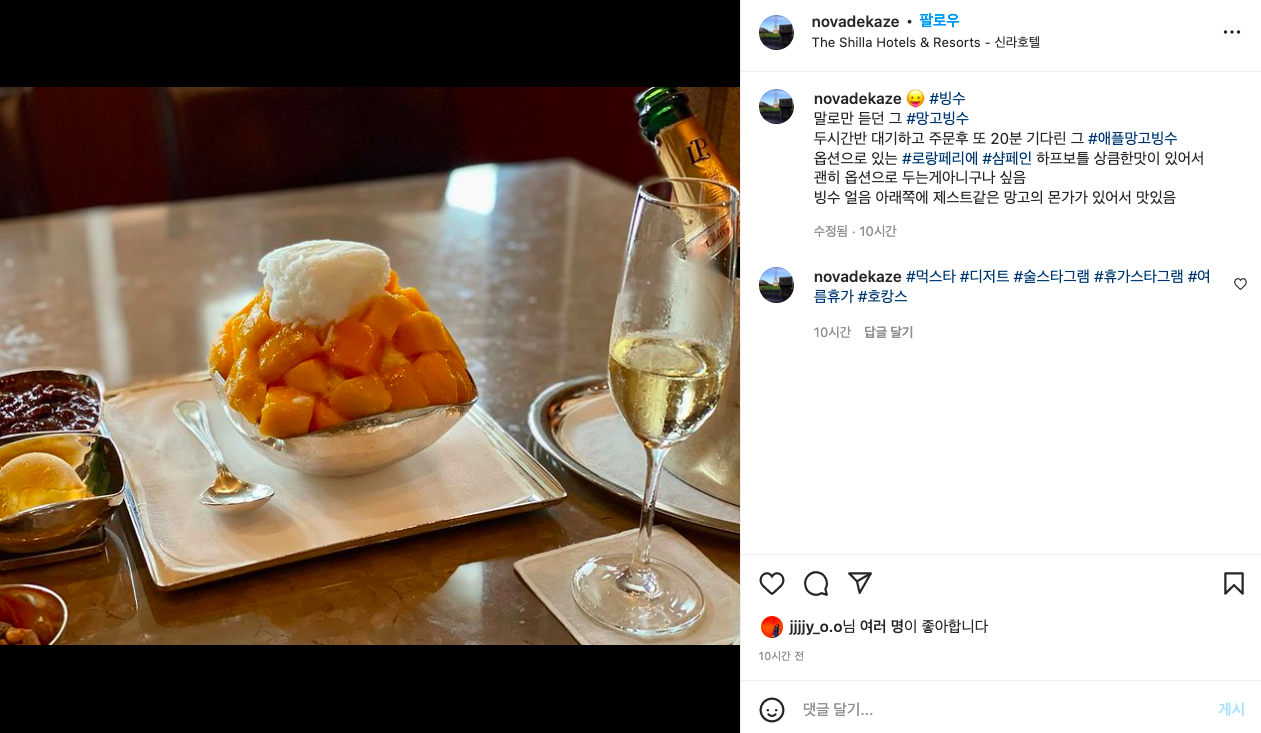
Some bloggers, sharing helpful tips on how best to get a table at this coveted establishment, talk about heading to the Silla even before the doors open. "You can order as soon as you take your seat at 10 am, but the bingsu doesn't actually get served until 11 am," advises one. "Even if serving starts at 11 am, there is limited staff, and the bingsu is brought to the table in the sequence of the orders taken."
As to why someone would want to start the day with a frozen dessert is as good a guess as mine.
I remember bingsu of my childhood as a relatively humble concoction on offer at bakeries in the hot summer season. Ice shavings and red bean decidedly took the center stage, with a few morsels of white rice cake, jelly and some canned fruit to break up the visual monotony of all that white and chestnut brown.
In the late eighties and early nineties, the rising middle class took to buying ice shavers for making bingsu at home, and my mother, fond of trying unusual kitchen appliances, was no exception. (Her ever-growing collection included a bread maker, a juicer and a bean sprout incubator.) But her recipe never deviated from the classic formula, except that she would sometimes add fresh fruit instead of canned ones on health grounds.
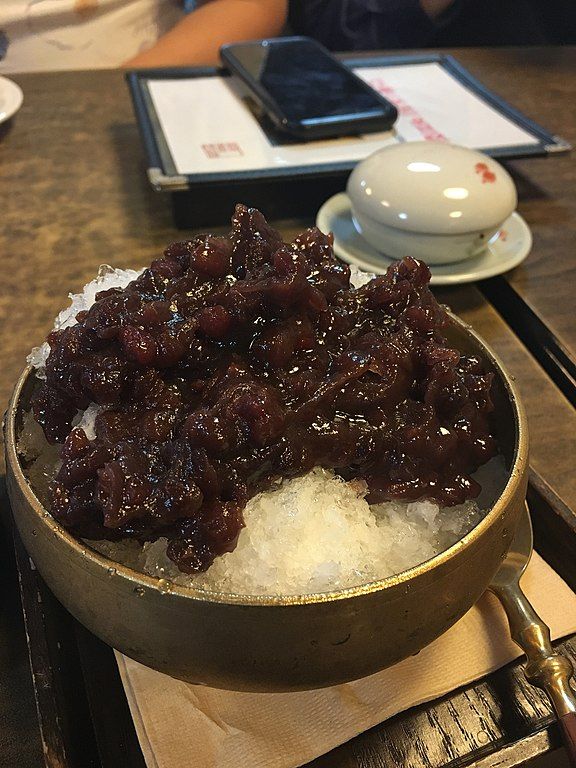
Things changed In the late nineties and the early aughts as specialty chains popped up and bingsu began to undergo an upgrading process. Ice Berry, founded in 1999 as a single storefront across the street from the Yonsei University in western Seoul, made a name for itself with an item dubbed the "Bingsu King"—combining "twelve different kinds of fruits, soft ice cream, corn flake, roasted grain powder, red-bean paste and rice cake" on a big platter. It quickly expanded into a successful franchise, opening some thirty locations around the country. (The founder though succumbed to gambling addiction and went to prison in 2006 for defrauding investors to fund the habit, but that's another story.)
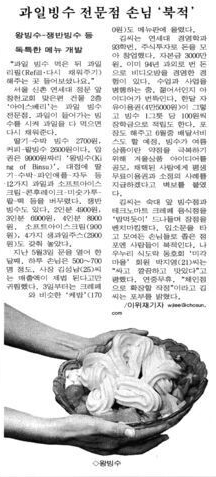
In 2013 another franchise, Sulbing, grew on the strength of a twist on bingsu that did away entirely with red-bean paste, instead mixing roasted and pulverized yellow beans with almond slices on top of frozen milk crystals for an intensely savory effect.
But such offerings were and remain accessible to most consumers; Sulbing, still in business with a vastly expanded array of bingsu choices (it even has branches overseas), sells most of them for around 10,000 won (7.50 dollars) today. The real transformation of bingsu into a luxury commodity is often attributed to the Shilla, which is said to have created the very first mango bingsu (in South Korea at least) in 2007 and has prompted other top-tier hotels to imitate, if not outright outdo, its famous creation over the past decade and a half.
Last year, someone at the Lotte Hotel, another five-star accommodation chain, had the clever idea of striking a "synergy between sweet apple mango and salty caviar" in bingsu (price: 69,000 won or 53 dollars). In another unorthodox take, the Hilton took the low-brow route of adding "cloud-like cotton candy in order to maximize the sweet taste" (still not cheap at 45,000 won or 34 dollars).
In late April, the Shilla announced that it had to raise the price of its mango bingsu more than 30 percent this year "because of skyrocketing costs of ingredients" i.e. mangos, prompting Chosun Ilbo to ask, "An order of mango bingsu costs 83,000 won—is it sprinkled with gold powder or something?"
As if rising to the challenge, the Four Seasons launched one month later its "golden Jeju apple-mango bingsu" featuring real gold leaf for maximum bling.
If that's just too tacky for your taste, the Lotte this year dropped the ostentatious caviar from his mango bingsu, which now comes in a bowl that emits clouds of dry-ice fog, as if God himself has bestowed ambrosia on us mere mortals. All that heavenliness is no bargain (88,000 won) but it sure looks divine.
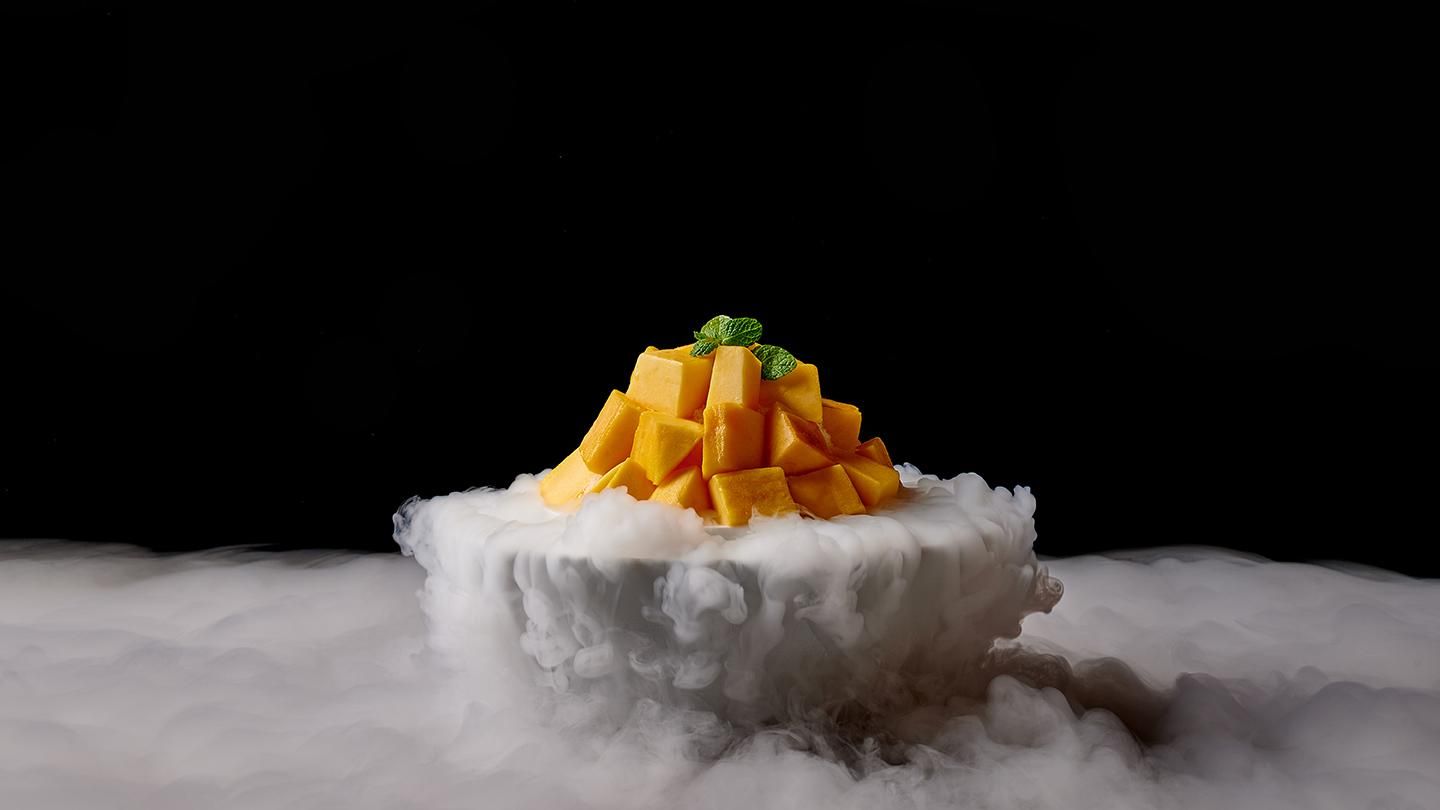
The race in South Korea to create the most covetable food using rare ingredients isn't a new thing. In 1995 a restaurant in Shinchon—where Ice Berry would open its first location four years later in fact—made news by sticking gold leaf on gimbap, a common snack that involves wrapping vegetables and minced meat in rice and roasted seaweed (kind of like Japanese sushi rolls). The resulting dish was surely a wonder to behold, but as one customer put it, "the taste, it's basically the same as normal gimbap."
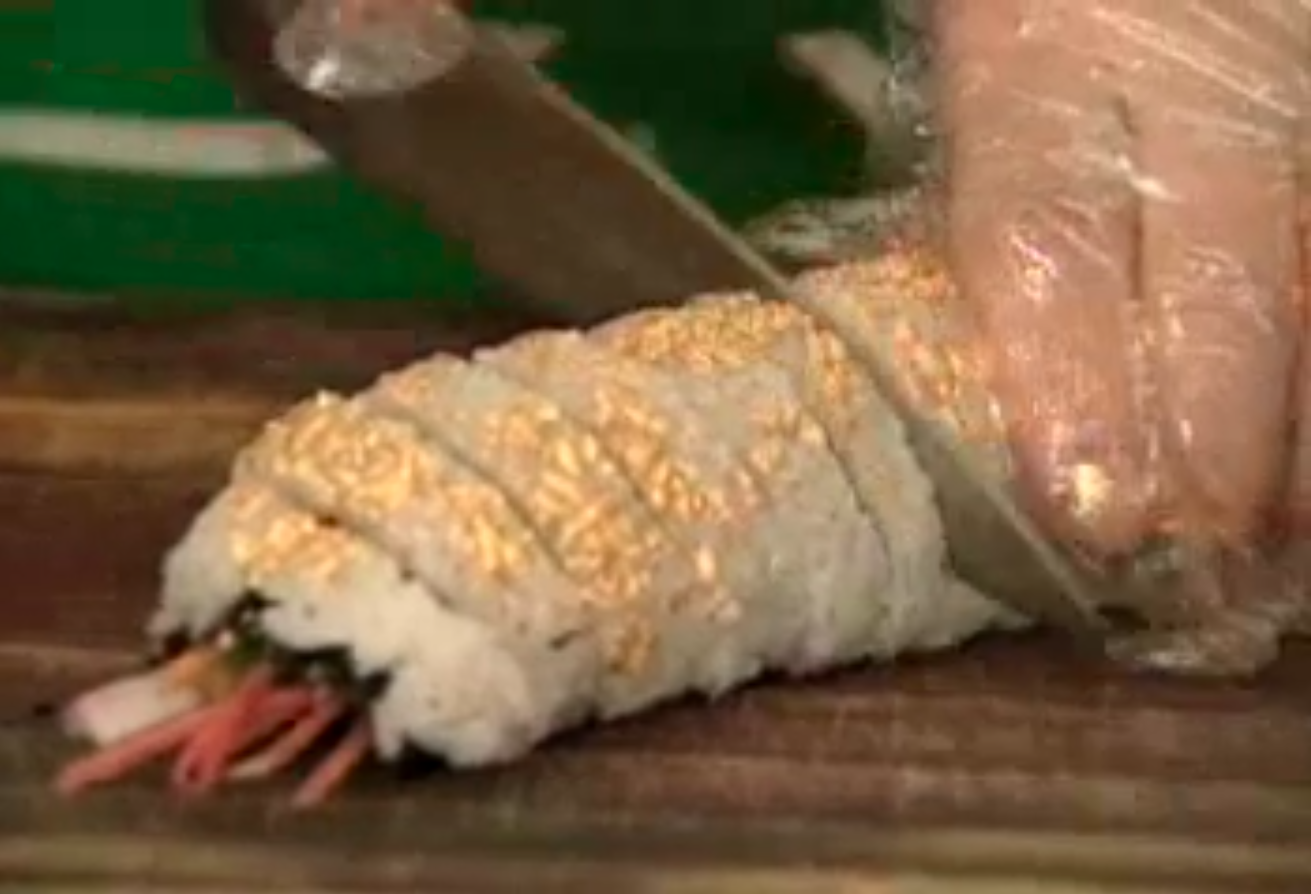
In November 2001 the South Korean Ministry of Food and Drug Safety issued a decree that local officials should shut down sales of gold-covered food, for not only gimbap joints but also coffee shops and seafood traders were adding gold powder to products and charging outrageous sums.
"Gold food that are expensive to the point of fomenting social anxiety are spreading widely, so we are taking measures to curb the practice in accordance with the law," said a ministry official. One company that came under the government's particular censure specialized in gold-plated dried Atlantic croakers (a type of fish South Koreans love to grill) and sold them for 200,000 won (153 USD) each.
But the law changed in 2019, allowing decoration of any food product in gold foil as long as the gold itself is above 95 percent in purity and used only for "external coating and decoration". What the Four Seasons is doing in pursuit of exclusiveness isn't illegal according to that revised rule; it's just distastefully nouveau-riche.
It's a reflection of the polarizing consumption pattern worldwide. Even though inflation is changing shopping habits everywhere in the world, the rich continue to spend and the less-than-rich scrap by. Outrageously sumptuous products still find plenty of customers among the haves.
In South Korea young couples with means are said to be flocking to buy second homes as country houses priced below 300 million won (230,000 dollars) are exempt from onerous property tax schemes. Five-star hotels experienced a jump of more than 50 percent in sales during the first quarter of this year compared to the same period last year.
Like that, mango bingsu costing nearly 100,000 won has become a phenomenon, prompting some media outlets to claim, "It's all part of an 'experience economy'. The MZ Generations, who aren't financially well-off, are consuming mango bingsu in order to experience a luxury hotel's ambience, interior and service."
In an article by the business newspaper Maeil Kyeongje, one expert argued, "The MZ Generations have two objectives in eating this bingsu: experiencing luxury and uploading photos on social media."
The MZ Generations, aged between 24 and 39, are often blamed for some of South Korea's most conspicuous spending habits on the assumption that they are obsessed with experience over ownership and love to show off their lives on social media.
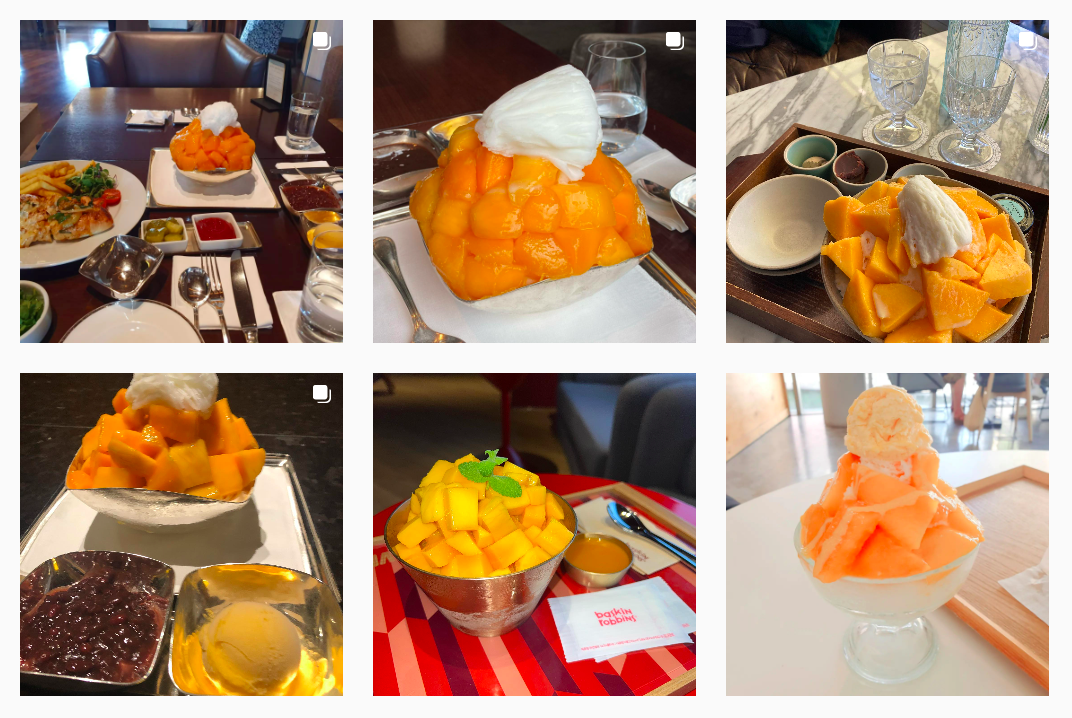
There may be some truth to that, but making up almost half of the South Korean population (46.9 percent according to a Bank of Korea study), these two generations aren't uniformly wealthy, no matter what the mainstream media say about them becoming "big spenders".
I ask a friend in her early thirties if she would go for a mango bingsu at the Shilla. She makes good money as a mid-level manager at a multinational, but pays rent on her apartment in central Seoul and has no rich parents.
She replied, "If I can split it with several friends, I would for the sake of participating in a trend. But otherwise no."
But another friend, in his late fifties, says he was recently at the very expensive bar in the basement of the Four Seasons, at the center of this year's bingsu phenomenon. He told me, "I was there with someone whose company was footing our bill, but it looked like everyone else was in their twenties. How can they afford something like this?"
Clearly South Korea's current luxury bingsu craze has something to do with inequality: those who have will spend their way through the looming downturn, whereas everyone else can just salivate on social media and look on with longing.
But it sure looks scrumptious.
Cover: the much publicize mango bingsu at the Four Seasons Seoul (source: the Four Seasons press room)